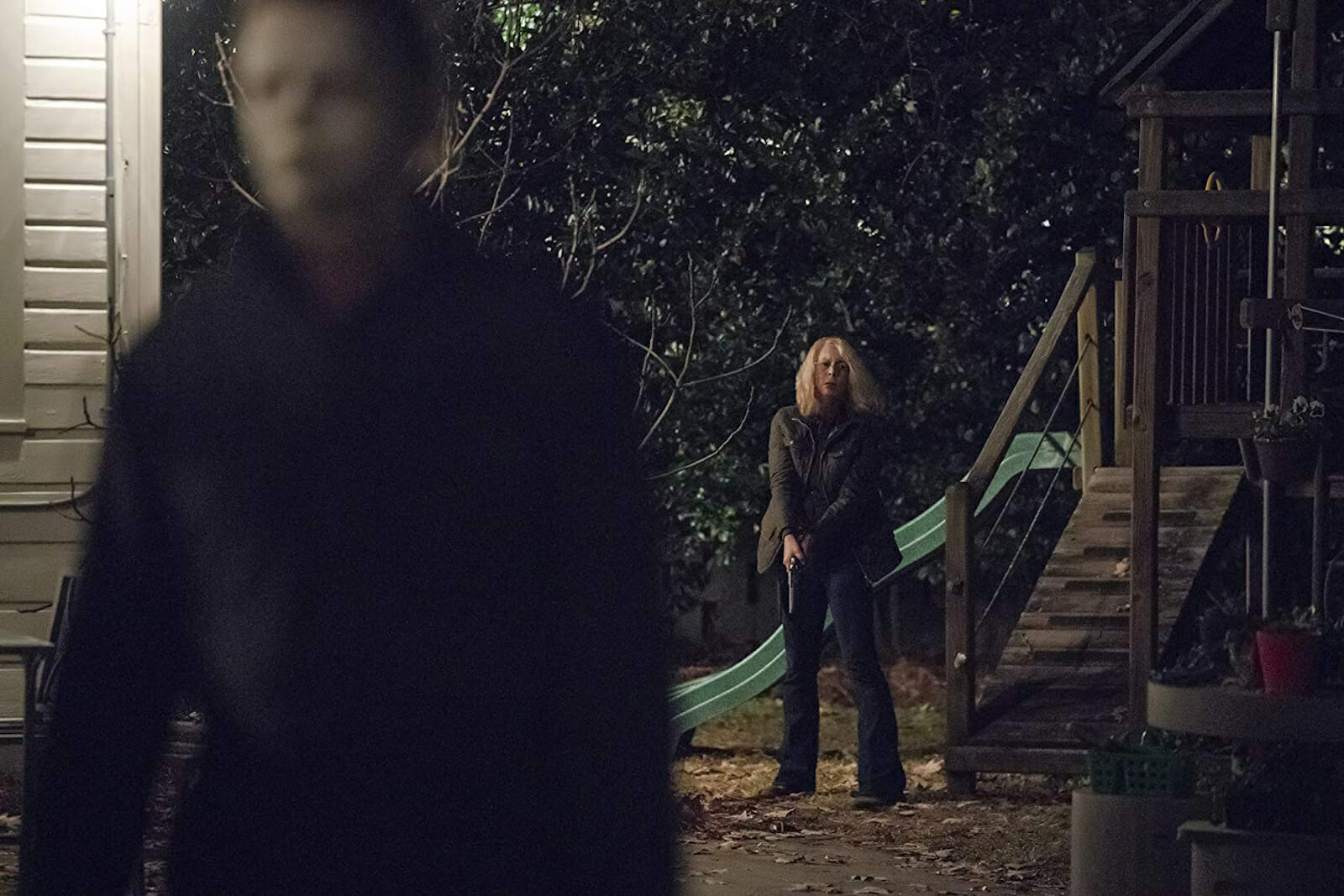
‘Halloween’ Review
I believe the term is ‘full circle.’ It was 1978, and I vividly recall waiting anxiously for the opening night start of John Carpenter’s Halloween. Now, 40 years later, I’ve just watched what is likely (hopefully!) the final entry of a franchise that spans between 9 and 12 movies, depending on which ones you count (although, apparently we are only supposed to count the first one and this latest). Carpenter’s original film gave us the backstory of 6-year old Michael Myers killing his sister Judith in 1963, and subsequently being confined to a sanitarium before showing up on All Hallows Eve in 1978 for what is now referred to as The Babysitter Murders.
Writer/director David Gordon Green (Stronger, 2017) and co-writers Danny McBride (yes, that Danny McBride) and Jeff Fradley make it clear from the start that this is a direct sequel (ignore the others!) to the 1978 original, although having a sequel and its original share the same title is itself a bit confusing. For anyone unfamiliar with Carpenter’s original classic (the one that kicked off an entire genre of slasher films), the filmmakers offer up a couple of fame-seeking British podcasters (Rhian Rees, Jefferson Hall) to spell out the history and gory details of Michael Myers and Haddonfield, Illinois. Michael has been institutionalized for four decades, never uttering a single word to his doctors…neither the now-deceased Dr. Loomis nor his protégé Dr. Sartain (Haluk Bilginer, mimicking some of Donald Pleasance’s oratory style). Thanks to a not-unexpected bus wreck, and the amateurish prank of the podcasters, Michael Myers is reunited with his William Shatner mask (looking a bit rough these days) and sets off to kill innocents and track down his nemesis, Laurie Strode.
The challenges of filmmakers in 2018 versus those in 1978 aren’t just limited to disposing of podcasters and teenager’s cell phones. They must also be cautious about treating women as victims, and here Laurie Strode is anything but. She has spent these years preparing herself and training her now-grown daughter Karen (Judy Greer) what to do once (not if) Michael Myers returns. Mother and daughter are now somewhat estranged, connected mostly by Laurie’s granddaughter Allyson (newcomer Andi Matichak). It’s kind of clever how the filmmakers empower the three generations so that together they may face off against the evil that has haunted their family for so many years.
The film has a retro 1970’s look and feel, and it is well-served as a tribute/follow-up to the original. Some familiar shots are mirrored and references to the original are noted through the dialogue…though some of the humor seems a bit forced (specifically young Jibrail Nantambu, who is being babysat). The opening credit sequence makes good use of the same font and color scheme from 40 years ago, and the rotten jack-o-lantern coming back to life is a nice touch.
The return of Jamie Lee Curtis as Laurie is what completes this haunting circle. Carpenter’s Halloween was her big screen debut, and though she still tends to go over the-top at times, this obviously would not have worked without the daughter of Tony Curtis and Janet Leigh. In fact, this story is mostly focused on the psychology of Laurie and her PTSD, as we never learn much about what makes Michael Myers tick. Others returning from the original film include Nick Castle as The Shape (though James Jude Courtney shares the role this time), and PJ Soles in an all-too-brief and quite memorable appearance. As a veteran cop, and described as the first officer on the scene 40 years ago, Will Patton’s character appears to want to be anywhere but where he is (side note: Mr. Patton looks almost identical to Paul Simon these days).
Huge carving knives gleaming (despite the low light) make several appearances, and many of Michael’s grisly murders are handled off camera. But don’t mistake that for a lack of violence or gore – there is an abundance. Keep in mind that the film is positioned as a direct sequel to the 1978 film, and fans of that classic should be quite satisfied. Even the iconic 1978 theme song is re-worked by John Carpenter, his grandson Cody Carpenter and musician Daniel A. Davies. The recognizable notes are a bit slower and bulked up through synth. As with most horror films, it would be pretty easy to point out the flaws, inconsistencies and necessary assumptions, but it’s one of the few that actually works if you avoid thinking too much and just “enjoy” the mythology and horror.

